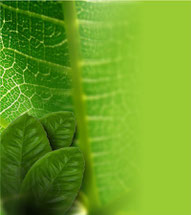Theme III.b: Micromorphological characteristics of plant drugs (vegetal drugs, herbal drugs)

Parenchymal tissue
Characteristics and function of the parenchyma tissue (nutrition). Chlorenchyma, Reserve Parenchyma, Aerenchyma, Parenchyma
aquifer.
The main mass of herbaceous plant body consists essentially of parenchymal tissue.
The parenchymal cells membrane, is generally slightly thickened, is composed of elastic cellulose layers and rarely is lignified. The cytoplasm of these cells includes large vacuoles that contain nutrients. Parenchymal tissue cells perform different functions such as storage of chemicals and water.
According to the functional differentiation, it can distinguished four types of parenchymal tissue:
-
Chlorenchyma
- Reserve Parenchyma
- Aerenchyma
- Parenchyma aquifer
Chlorenchyma
It is located in the green parts of the plant. In the leaves is limited on both sides by a skin. This
anatomical differentiation of parenchyma is in correspondence with the main functions of the sheet.
It is rich in chloroplasts and is located in cylindrical cells arranged perpendicularly to the surface. It is called “palisade parenchyma” because of their appearance in a cross-section of the
sheet.
Their cells are separated by intercellular spaces and in the underside of the sheet are disposed on another structure poorest in chlorophyll: the spongy
parenchyma.
Intercellular spaces are generally wider and are in communication with the stomata, always abundant in the underside of the leaf.
Reserve Parenchyma
It lacks of chloroplasts and has the function of store food substances to be used later by the plant, for example, starches, lipids, sugars and other
active ingredients.
This parenchyma has large intercellular spaces and is abundant in the rhizomes, tubers, bulbs and aerial stems.
Aerenchyma
It is characteristic of plants that live in aquatic and semi-aquatic places.
It consists of irregularly shaped cells with large intercellular spaces that facilitate the exchange of gases in the submerged bodies of these plants.
The intercellular spaces are in communication with atmospheric air through stomas located in the leaves and stems which are floating or emerged.
Parenchyma aquifer
It is characteristic of plants that live in dry places like cactus. This tissue has functions of store liquid during periods of rain and reserve for times of drought.
Other adult tissues
see also
Characteristics and function of the parenchyma tissue (nutrition). Chlorenchyma, Reserve Parenchyma, Aerenchyma, Parenchyma
aquifer.

 Pharmacognosy´s topics - Medicinal plants
Pharmacognosy´s topics - Medicinal plants


Write a comment